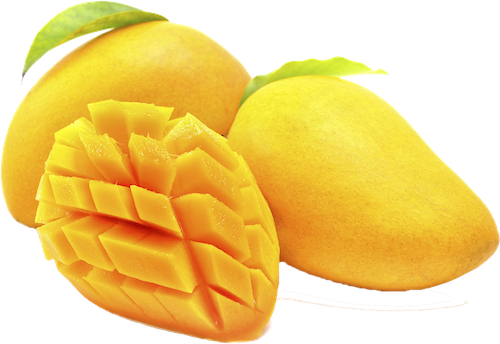Cheap Eats:
Chatni
Mango Chutney
When I arrived in Chennai in southern India, almost the first thing my guide pointed out was the mango trees. He told us that there are 400 varieties of mango in India, which is about half of the varieties that exist worldwide. It may seem to us in a temperate climate that a fruit tree is not the first thing you'd point out to a foreign visitor, but the mango is not just another fruit tree; mangoes are the most important fruits in the world, and in fact are one of the planet's 15 most important food crops. And nowhere is this more evident than in India.
Mangifera indica is, as the name indicates, indigenous to India, or at least partly to India, with its most likely natal region stretching from eastern India through Myanmar. Mangoes were being cultivated long before history was being recorded, but they were slow to spread. The fruit is extremely perishable, and even the seeds don't remain viable for long. The Greeks and Romans never saw mangoes - with the possible exception of Alexander the Great, but only because he invaded India. But if he did see mangoes, he didn't mention them, and none went back to Europe with him (not that they would have survived the trip).
The first mention of mangoes by Europeans (travelers, not growers) didn't come until early in the 14th century, though it is believed that mangoes had been transplanted into Africa by around 1000, transported by travelers from Persia. The first mangoes in the New World were planted in Brazil in 1700, and by about 1740, they were being planted in both the West and East Indies and Australia. Mangoes didn't make it to Florida until the mid-1800s, and Florida is still the only place they grow successfully in the continental United States.
Today, mangoes thrive in tropical areas around the world, though India is still the leading producer (about 9.5 million tons a year). But even with mangoes spread around the globe, few people in temperate regions have ever sampled them, and even in large cities, they have only recently begun to show up regularly in grocery stores (thanks in large part to an increasingly diverse population, much of it from tropical regions that have long enjoyed mangoes).
The word mango is derived from the Tamil man-kay or man-gay, which the Portuguese adopted as manga when they settled in western India. The trees, which are evergreens, are fifty to sixty feet tall, and each tree produces a prodigious number of mangoes. Mangoes vary greatly in size, with the smallest about the size of plums and the largest weighing 4 to 5 pounds. Some varieties are brightly colored, with shades of red and yellow, while others are dull green. The flesh is yellow to orange in color, is juicy (which can make it very messy to eat), is often fibrous, and has a distinctive, spicy flavor. (If you've tried mango before and didn't like it, try it again, perhaps in the recipe below. Or at very least, promise yourself you'll try it if you ever visit the tropics, because a freshly picked ripe mango is a sublime treat - but ask locals for the best eating mangoes.)

Mangoes have a single large, flat seed, to which the flesh sticks tenaciously. The easiest way to cut up a mango is to slice from the top, find that seed with your knife blade, and let the blade follow the flat contour of the seed. That way, you get nice, large “fillets” of mango.
This chutney bears little resemblance to the chutneys one buys in jars. It is fresher, brighter, and less acidic. It is, in fact, both authentic and absolutely delicious. It makes a nice accompaniment to Indian food, but is also great with a simple roasted chicken, or even to spark up some cottage cheese. Enjoy.
Chatni
(Mango Chutney)
1 Tbs. vegetable oil
1 tsp. cumin seeds
2-inch piece of fresh ginger, peeled and cut into thin slivers
1 clove garlic, minced
2 medium-ripe mangoes (about ¾-lb. each), peeled and cut into ½-inch cubes
1 tsp. dried red pepper flakes
½ tsp. cinnamon
Dash of cloves
2 Tbs. fresh lime juice
⅓ cup sugar
½ tsp. salt
Heat the oil in a small saucepan over medium-high heat. When oil is hot, add cumin seeds and fry, stirring constantly, until lightly colored, about 30 seconds. Add the ginger and garlic and fry, stirring, for another 30 seconds. Add the mango, pepper flakes, cinnamon, cloves, lime juice, sugar, and salt. Mix thoroughly and reduce heat to low. Cook, stirring occasionally, until the mango softens and the liquid begins to thicken, about 15-20 minutes. Can be served warm or cold. Can be kept in the refrigerator, in a closed container, for up to 6 days.
Makes about 2 cups.

